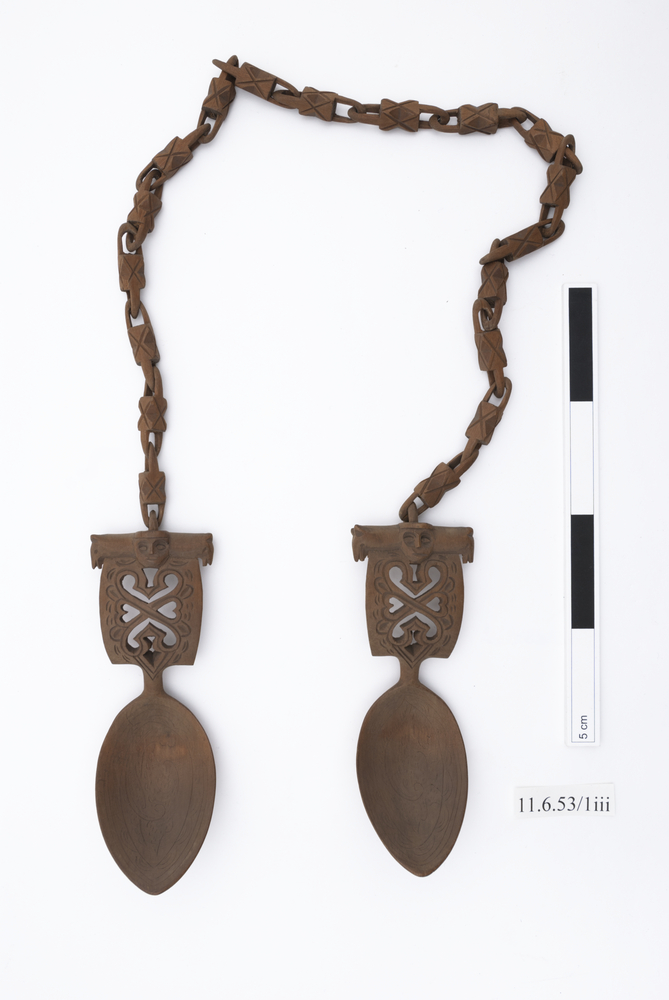


Carved wooden pair of love spoons linked by a chain. The spoons have an incised pattern in the bowls and the handles have cut out details including heart shapes. Carved face above the spoon, below the place where the chain is attached. The chain is carved from one piece of wood and has interlocking sections.
Although these spoons possess similarities to spoons carved in Wales during the 18th and 19th centuries; for example the carved hearts and the chain linking the two spoons, the item derives from the wedding spoon tradition which appears throughout Europe and even into Africa. David Western’s excellent publication Fine Art of Carving Lovespoons includes on page 5 a photograph of a virtually identical spoon to that in your possession, and certainly carved by the same maker, which is described in the caption thus: “Two spoons linked by a single chain were used at Norwegian marriage ceremonies to show that the two individuals were now joined as one. This two-ended type spoon is also utilized by a number of African cultures during their marriage ceremonies.� The spoon photographed is housed in the Vesterheim Norwegian-American Museum, Decora, Iowa, USA, and it would be fascinating to discover how the artefact in your collections arrived in London originally. According to Western, when used at marriage ceremony suppers, “the spoon might be draped over the couple’s shoulder with each having a spoon, or they might use an end of the spoon each to eat their first meal.� Whereas traditionally the bowls of Welsh lovespoons remain plain and undecorated, the two shown in picture 1 appear to possess a carved floral design of some kind. The pair of faces flanked by animal heads also have no comparisions with the Welsh spoons.The spoon could be described, therefore, as a wedding spoon, possibly in the Nordic tradition, commonly used during marriage celebrations rather than during the courtship phase.






